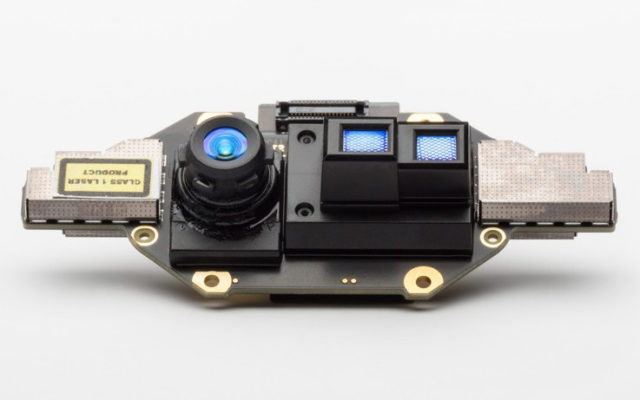Kinect started as as motion sensing input device for Xbox 360 & One game consoles with an integrated webcam, infrared projector, and a microphone array, which enabled it to detect depth, motion, and voice from gamers.
But it also become popular with maker projects due to price and capabilities, and was even found to be a worthy microphone array for voice commands. The third generation of Kinect went into Hololense mixed reality headset, and Microsoft has just unveiled the fourth generation Kinect with Project Kinect for Azure.
AFAIK, the company did not provide the full technical details about the new Kinect, but we know it comes with an RGB camera, a 360-degree mic array, an accelerometer, and a time-of-flight (ToF) depth-sensor, and the company did offer some details about the latter :
- Number of pixels: 1024×1024 resolution
- Highest Figure of Merit (highest modulation frequency and modulation contrast resulting in low power consumption with overall system power of 225-950mw)
- Automatic per pixel gain selection enabling large dynamic range allowing near and far objects to be captured cleanly
- Global shutter allowing for improved performance in sunlight
- Multiphase depth calculation method enables robust accuracy even in the presence of chip, laser and power supply variation.
- Low peak current operation even at high frequency lowers the cost of modules
As you’d have already probably guessed, Project Kinect for Azure integrates with Azure cloud and edge platform, and will “unlocks countless new opportunities to take advantage of Machine Learning, Cognitive Services and IoT Edge”. Some potential applications include automation for cost savings in the security, healthcare, and manufacturing sectors, robots and drones with obstacle avoidance & automatic navigation, and holoportation for “real-time communication at real-world scale”.
Information on the project page is rather limited as this time, but you can sign-up to get news and updates on availability.
Via LinkedIn

Jean-Luc started CNX Software in 2010 as a part-time endeavor, before quitting his job as a software engineering manager, and starting to write daily news, and reviews full time later in 2011.
Support CNX Software! Donate via cryptocurrencies, become a Patron on Patreon, or purchase goods on Amazon or Aliexpress





